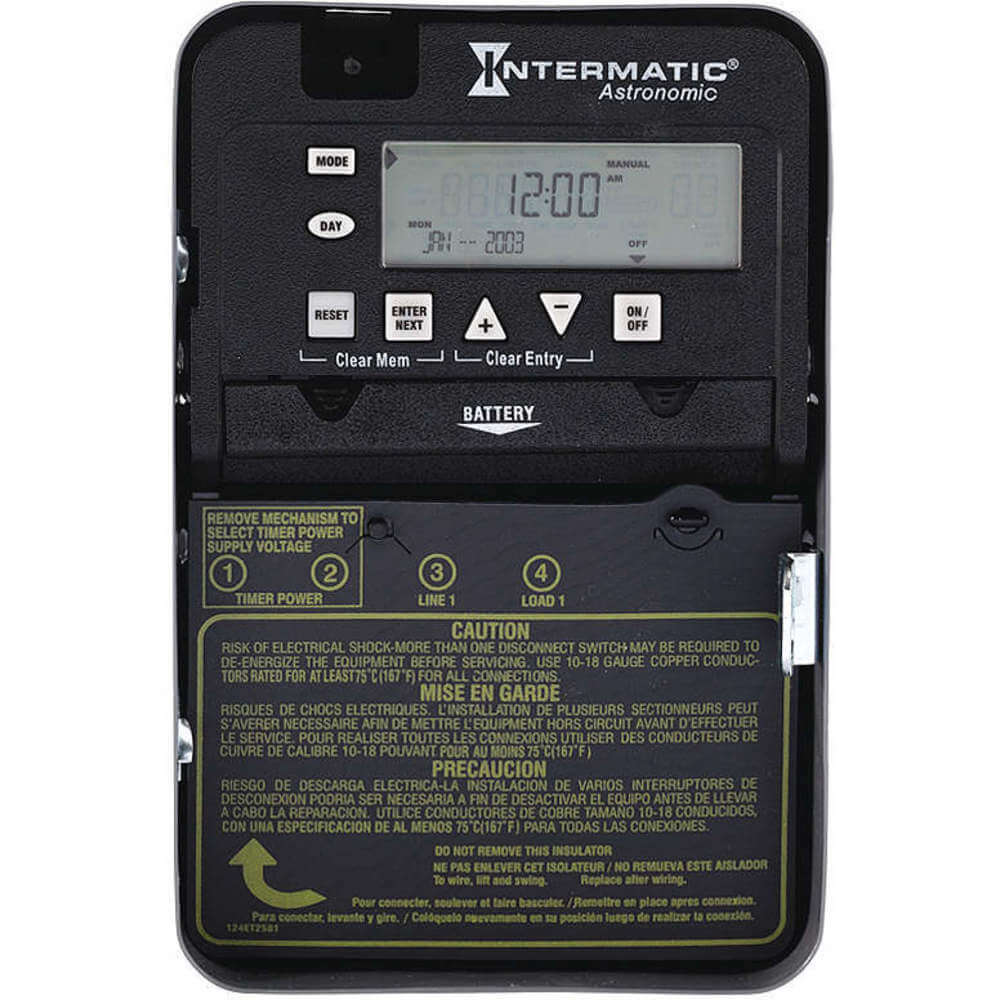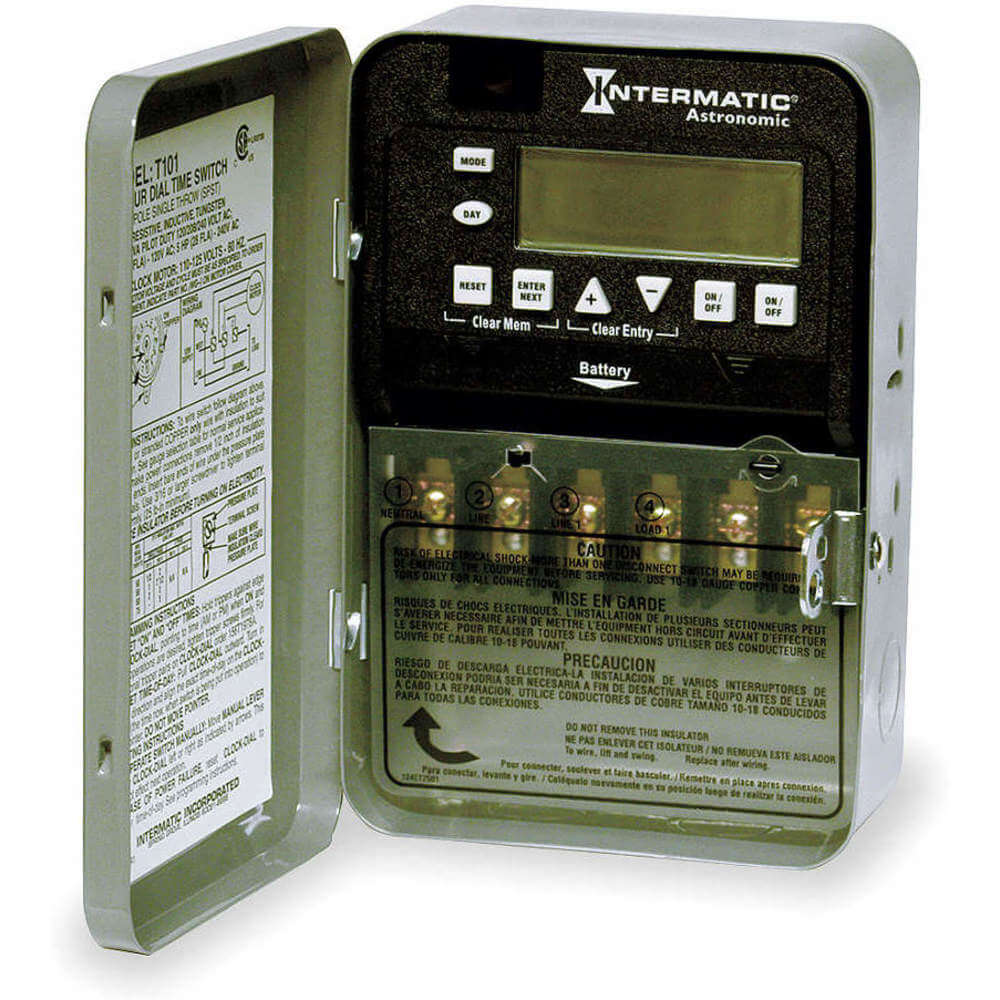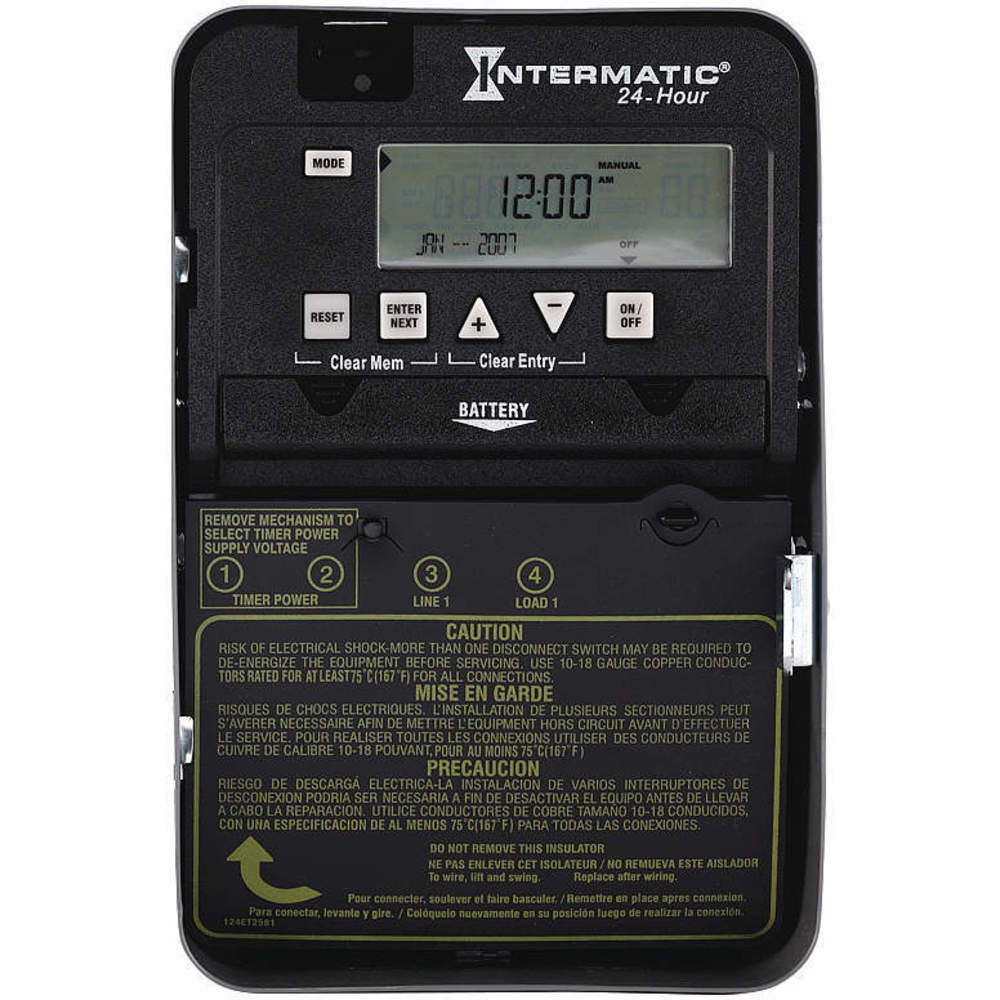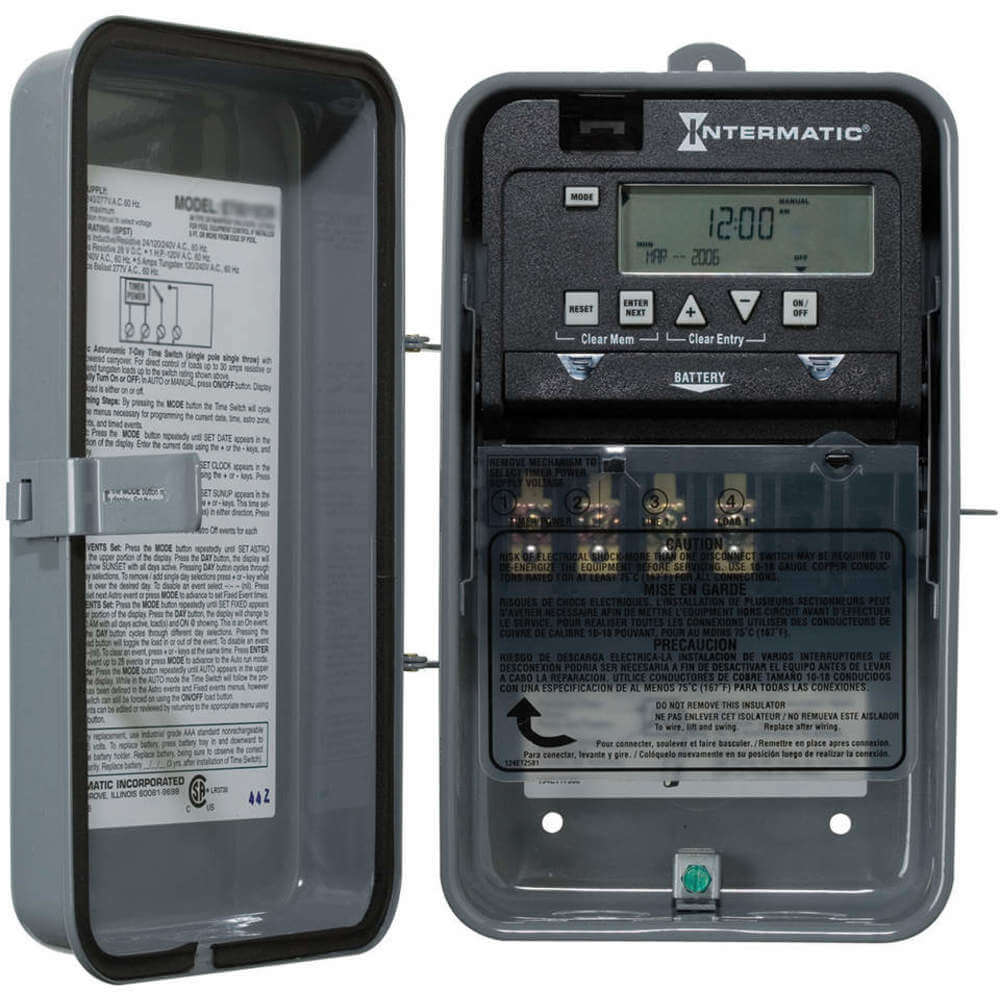Intermatic ET8015C electronic timer enables users to program schedules for turning devices ON and OFF, enhancing energy efficiency, security and convenience. By regulating operations during specific times, it reduces energy consumption and utility costs.
Working Mechanism:
- Users input specific time-based events using the timer's interface. These events determine when the connected devices should turn on or off.
- If configured in Astro 7 days mode, the timer calculates sunrise and sunset times based on its location and date. It then adjusts the programmed events accordingly to align with natural lighting changes.
- As time progresses, the timer compares the current time with the programmed events. When a scheduled event matches the current time, the timer sends a signal to the connected device to turn on or off.
- The timer efficiently links a single programming action to multiple events, optimising scheduling without redundant inputs.
- If connected to an Ethernet port, users can remotely adjust programming settings using a PC. This allows for flexible modifications without direct access to the timer.
Features:
- Intermatic ET8015C electronic timer has Astro 7 days mode, which adapts to changing sunrise and sunset times, eliminating the need for separate photocontrol devices.
- This ET8015C electronic timer has 28 programmable events for scheduling possibilities, allowing precise control over device activation.
- It features a steel enclosure for durability and snap-in mounting for easy installation.
- It can be operated at temperatures ranging from -40 to 155 degrees F.
- This timer has a lockable hasp for preventing unauthorised changes, enhancing security.
- It has an ethernet port for remote programming via PC, allowing users to adjust settings and schedules from a distance.
- Customers looking for electromechanical variants can choose Intermatic electromechanical timers having teeter-type terminals for numerous load connections.
Frequently Asked Questions:
Q. What benefits do an electronic timer have over a mechanical one?
A. Both of them operate similarly and are capable of carrying out the same tasks. A mechanical timer is typically constructed as a massive, grey, metal box that may stand out significantly in your home's decor. Mechanical timers are typically larger, last longer and can take more electrical load than a digital timer.
Q. What types of timers are there?
A. There are two primary categories of light timers: mechanical and electrical, which are available as a plug-in or hardwired modules. Astronomical and photocell timers are actually forms of electronic timers, but because they are so dissimilar from one another, we have to split them.
Q. What is a 7-day timer?
A. Compact digital time switches called programmable 7-day timers offer precise timing and the option of daily or weekly programming. They have push buttons and display prompts for quick and easy configuration.
Q. Does the ET8015C timer require an internet connection for programming?
A. The timer's programming can be done directly through its interface without an internet connection. However, if you want to use remote programming, an internet connection is needed.
Q. How do I install this electronic timer?
A. The timer offers a snap-in mounting design for easy installation.
Q. How does the astrological mode of the ET8015C timer work?
A. The astrological mode uses location-based data to calculate sunrise and sunset times. The timer then adjusts its programmed events to align with these natural lighting changes, optimising energy efficiency.
 Change Country
Change Country




 Trade pricing is available for
Trade pricing is available for  Order Value should be £500+
Order Value should be £500+